The cybersecurity war is no longer fought on familiar ground. The old walls you built—the firewalls, the signature-based antivirus solutions—are being outflanked by an enemy that is smarter, faster, and more relentless than ever. For cybersecurity business owners, this isn’t a crisis; it’s a crossroads. Continue down the path of reactive, outdated methods and risk obsolescence, or pivot to the single most powerful force shaping the future of defense: Artificial Intelligence.

This is your blueprint for not just surviving the new era, but for dominating it. It’s about transforming your business from a simple service provider into an indispensable, AI-powered security partner that drives unprecedented growth and commands premium value.
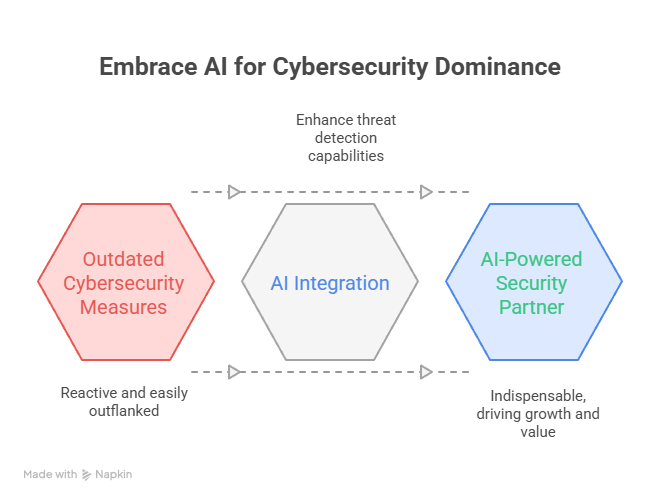
A.I. in Cybersecurity Market Growth Projections
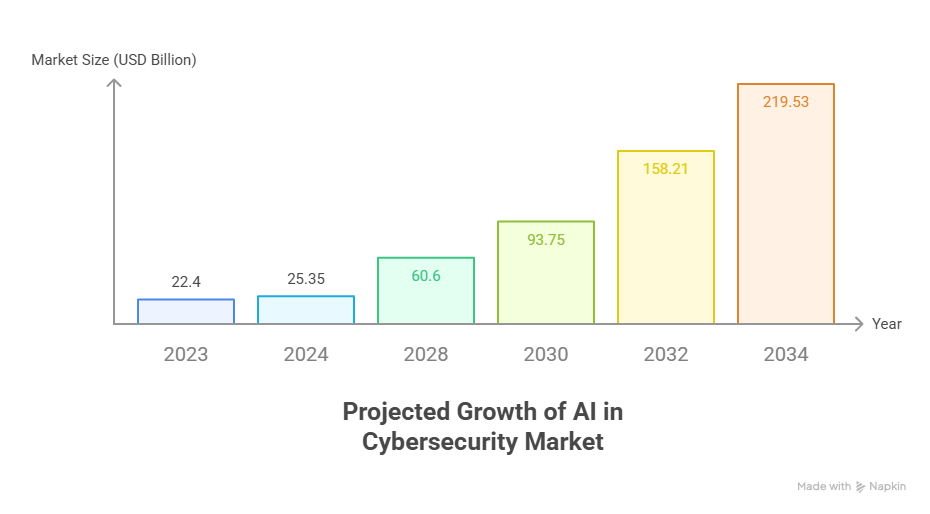
| Year | Market Size (USD Billion) | Key Growth Drivers |
| 2023 | 22.4 | Increasing adoption of IoT and connected devices, rising data protection concerns. |
| 2024 | 25.35 | Growing number of sophisticated cyberattacks, demand for real-time threat detection. |
| 2028 | 60.6 (Projected) | Integration of AI with cloud solutions, advancements in machine learning. |
| 2030 | 93.75 (Projected) | Need for automated security responses, proliferation of 5G and Wi-Fi 6. |
| 2032 | 158.21 (Projected) | Increased reliance on AI for identity verification and behavioral biometrics. |
| 2034 | 219.53 (Projected) | Continued digital transformation initiatives across all industries. |
The Old Playbook is Broken: A New Battlefield Demands New Weapons
For years, the cybersecurity model was straightforward: identify a known threat, create a signature for it, and block it. This approach is now fundamentally flawed. Today’s adversaries use polymorphic malware that changes its signature with every attack and AI-powered tools to launch automated, sophisticated campaigns at a scale no human team can handle.
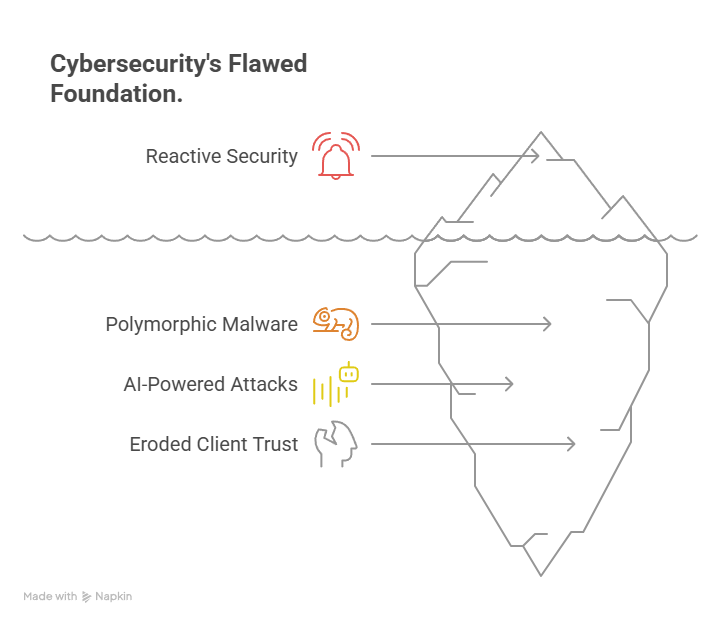
Relying on traditional methods in this environment is like sending a single watchman to guard a fortress against an invisible, shape-shifting army. You’re constantly playing catch-up, responding to alerts only after the breach has occurred. This reactive posture erodes client trust and caps your business’s potential.
Enter the Game-Changer: How AI Rewrites the Rules of Defense
Artificial Intelligence isn’t just another tool; it’s a new operational brain for your security services. It doesn’t just follow rules; it learns, adapts, and predicts.
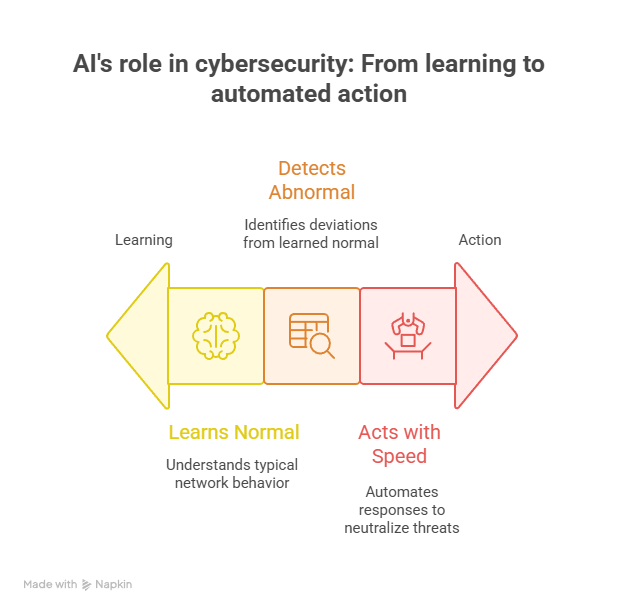
- It Learns the “Normal”: At its core, machine learning, a subset of AI, ingests vast amounts of data from a client’s network—emails, file transfers, logins, application usage—to build a unique, evolving understanding of what “normal” looks like. It learns the rhythm and pulse of the organization.
- It Detects the “Abnormal”: Once it knows what’s normal, AI can instantly spot anomalies. A user suddenly accessing sensitive files at 3 a.m.? An employee’s machine communicating with a server in a hostile country for the first time? AI flags these subtle deviations that would be needles in a haystack for a human analyst.
- It Acts with Surgical Speed: The true power of AI lies in its ability to automate responses in milliseconds. Instead of an analyst getting an alert and spending critical minutes investigating, an AI can instantly quarantine a device, block a malicious process, or sever a suspicious connection, effectively stopping an attack in its tracks.
From Tech to Profit: High-Margin AI Services You Can Sell Today
To grow your business, you need to sell high-value services. AI allows you to move beyond basic monitoring and offer a sophisticated suite of solutions that clients will pay a premium for.
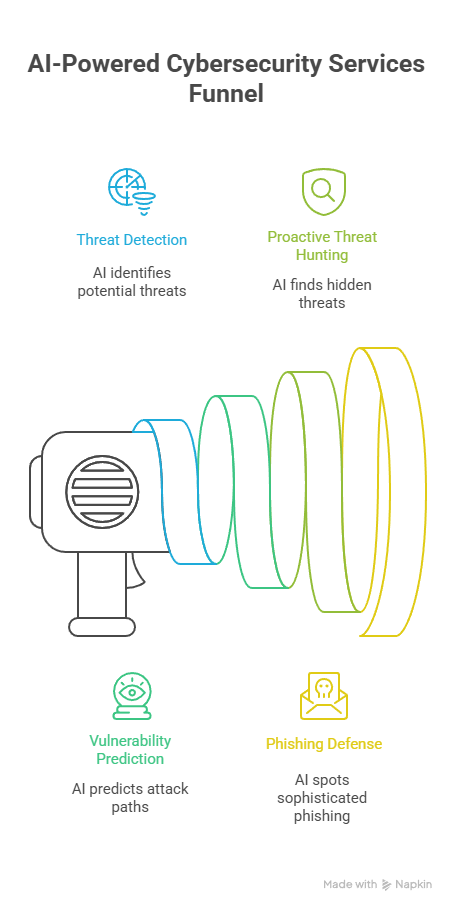
- Autonomous Threat Response: Offer a service where your AI platform not only detects threats but autonomously neutralizes them 24/7 without human intervention. This is the ultimate peace of mind for clients, protecting them even when your team is asleep.
- Predictive Security Audits: Instead of just finding existing vulnerabilities, use AI to predict likely attack paths. Analyze a client’s network to identify the “low-hanging fruit” for attackers and provide a prioritized roadmap for shoring up defenses before an attack happens.
- AI-Powered Threat Hunting: Elevate your offerings with proactive threat hunting. Use AI to sift through network data to find hidden, dormant threats and the subtle indicators of a planned attack, transforming your service from a passive shield to an active spear.
- Intelligent Phishing Defense: Move beyond standard email filters. Offer an AI-driven service that analyzes the context, language, and relationships within communications to spot sophisticated spear-phishing attempts that trick even savvy employees.
The AI Growth Engine: Translating Services into Business Success
Integrating these services creates a powerful flywheel for growth.
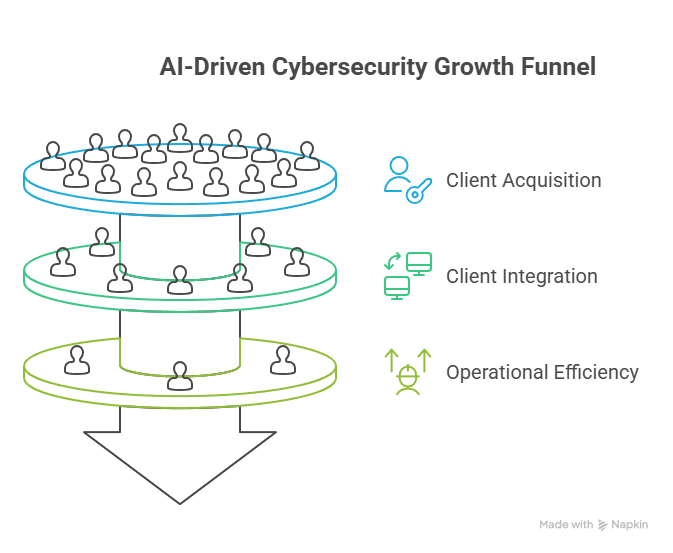
- Attract High-Value Clients: Businesses are actively searching for cutting-edge security. Leading with an AI-first message positions you as an innovator and attracts clients who value security and are willing to invest in it.
- Increase Client “Stickiness”: Once a client’s network is integrated with your AI platform, which has spent weeks or months learning its unique behavior, the cost and risk of switching to another provider becomes incredibly high. This drastically reduces churn.
- Boost Operational Efficiency: AI automates the low-level, repetitive tasks that consume 80% of an analyst’s time. This frees your expensive human talent to focus on client strategy, high-level threat analysis, and business development, allowing you to scale without a linear increase in headcount.
At a Glance: Traditional Security vs. AI-Powered Security
| Feature | Traditional Cybersecurity | AI-Powered Cybersecurity |
| Core Principle | Reactive (responds to known threats) | Proactive & Predictive (identifies and stops novel threats) |
| Detection Method | Signature-based (looks for known malware) | Behavior-based (looks for anomalous activity) |
| Response Time | Minutes to Hours (human-dependent) | Milliseconds to Seconds (automated) |
| Primary Focus | The Perimeter (firewalls, gateways) | The Entire Network (endpoints, cloud, user behavior) |
| Human Role | Constant manual analysis of alerts | Strategic oversight and complex threat investigation |
| Business Value | A necessary cost center | A strategic enabler that builds resilience and trust |
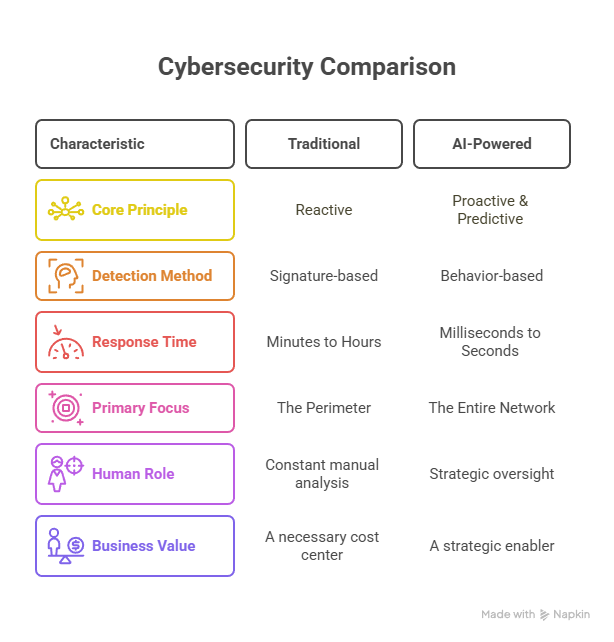
Your Roadmap to Becoming an AI-Powered Cybersecurity Leader
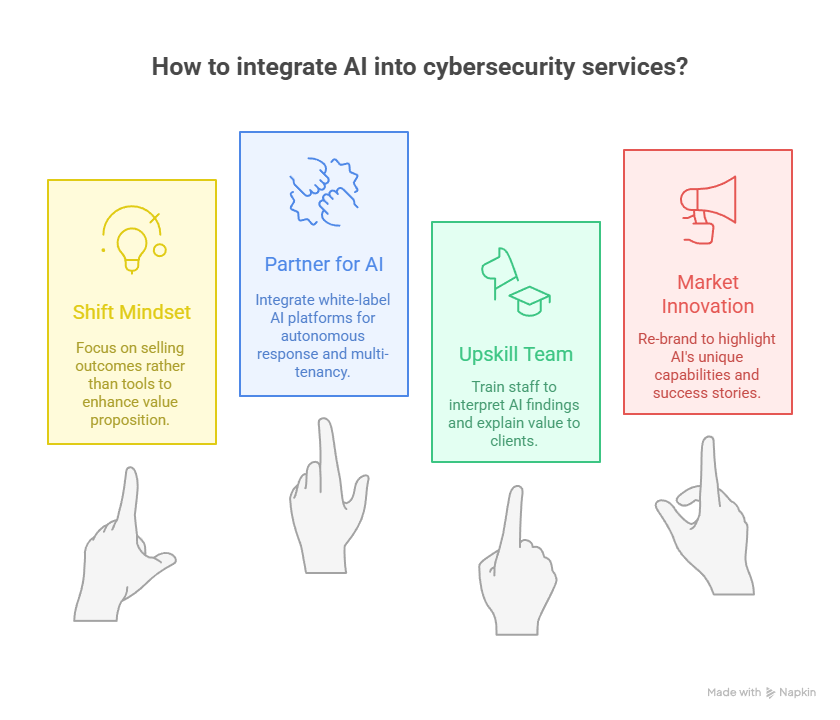
- Shift Your Mindset: Stop selling tools and start selling outcomes. Your value proposition is no longer “we monitor alerts”; it’s “we provide autonomous protection that guarantees business uptime.”
- Partner for Power: You don’t need to build your own AI. The market is mature with powerful white-label AI platforms you can integrate into your service stack. Choose a partner that focuses on autonomous response and is built for multi-tenancy.
- Upskill Your Human Heroes: Your team’s role will evolve. Train them to become “AI handlers.” They need to understand how to interpret AI’s findings, fine-tune the models, and explain the value of this new approach to clients.
- Market Your Intelligence: Re-brand and re-position your business. Your marketing materials, sales pitches, and website should all scream “innovation.” Highlight case studies where your AI platform stopped a threat that a traditional solution would have missed.
The window of opportunity is now. Your competitors are either making this shift or they will be left behind. By embracing AI, you are not just buying new software; you are adopting a new business model—one that is more efficient, more profitable, and infinitely more valuable to the clients you protect. The future of cybersecurity is intelligent and autonomous. Make it your future, too.










